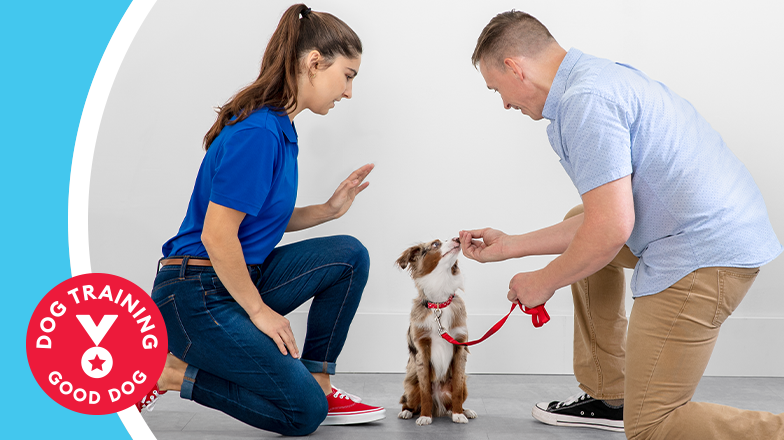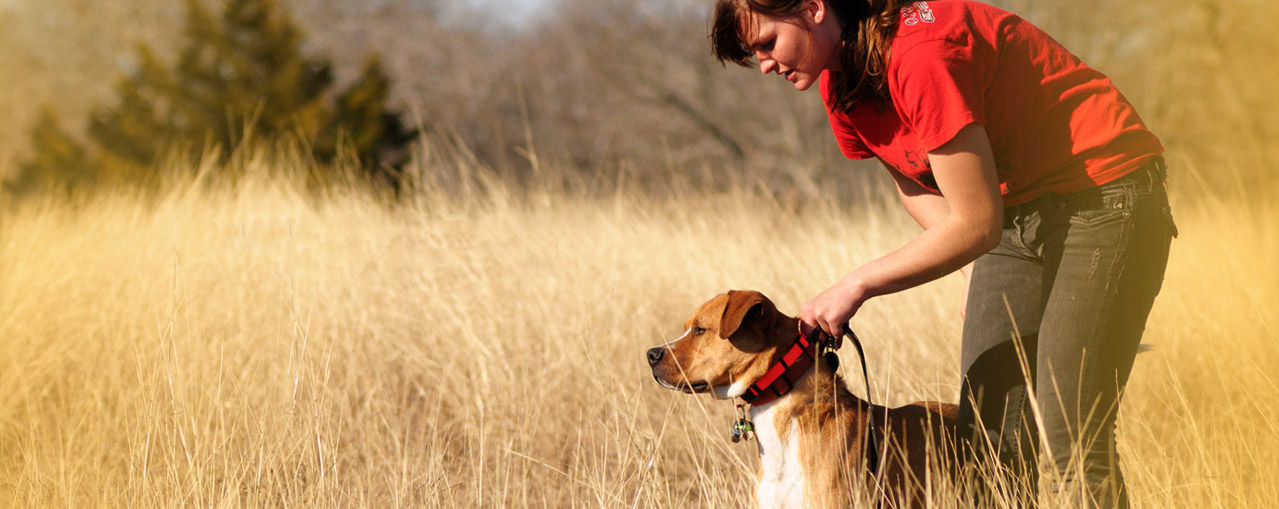Novice's Overview to Effective Pet Dog Training in your home
Effectively training a pet dog at home calls for a nuanced understanding of canine actions and effective interaction approaches. Establishing clear training goals, using top notch incentives, and maintaining consistency throughout household participants are essential components. Integrating training into everyday routines can improve both involvement and retention.
Comprehending Pet Dog Habits
Understanding canine actions is essential for effective training and cultivating a harmonious connection between humans and their canine companions. Dogs interact mainly with body language, vocalizations, and facial expressions, making it crucial for proprietors to interpret these signals accurately. Recognizing actions such as tail wagging, grumbling, or cowering can give understandings right into a pet dog's mood and purposes.

Typical behavior concerns, such as aggressiveness, anxiety, or excessive barking, typically stem from misconceptions or unmet requirements. Observing and resolving these issues promptly can prevent acceleration and guarantee a positive training experience. By fostering a deep understanding of pet behavior, proprietors can tailor their training techniques to match their canine buddies, inevitably causing a pleased and mannerly pet.
Essential Training Tools
A well-appointed training space can significantly enhance the effectiveness of pet training in your home. Necessary training devices make certain that both the canine and the fitness instructor can participate in efficient sessions that cultivate understanding and bonding.

Spending in a durable leash and a comfy, well-fitting collar or harness is important for safety and control. These devices assist develop limits and guarantee the dog continues to be protected throughout training. Additionally, a marked training area, without distractions, aids focus for both the pet and the fitness instructor.
Training aids such as training pads, cones, or agility devices can additionally boost the experience by introducing range and obstacles. Lastly, having a note pad or electronic application for tracking development can be indispensable, enabling you to keep in mind successes and locations for enhancement. Making use of these important tools will develop a favorable training environment and lay the structure for reliable learning.
Creating a Training Regimen
Establishing a constant training regimen is necessary for reliable dog training in your home. A well-structured routine not just helps in reinforcing preferred actions yet also offers your canine with a complacency see it here and predictability. To develop a reliable training regular, begin by identifying details training objectives, such as standard commands, chain strolling, or housebreaking.
Select an assigned time each day for training sessions, ideally when your pet dog is alert and receptive. Sessions should be brief, about 5 to 15 minutes, to keep focus and stop tiredness. Uniformity in timing and atmosphere will certainly boost your canine's discovering experience.
Include training right into day-to-day activities to reinforce skills. Technique commands throughout walks or nourishment, which integrates finding out into natural routines. In addition, stay versatile and readjust the routine as required, accommodating your pet's power degrees and mood.
Positive Support Methods
Positive reinforcement strategies are essential to effective pet training, advertising desired habits with rewards instead of punishment. This method makes use of positive stimulations, such as treats, appreciation, or play, to encourage dogs to duplicate certain activities. The keystone of this strategy is timing; incentives must be given promptly adhering to the preferred actions to develop a clear association.
When carrying out positive support, it is vital to pick incentives that are inspiring for your dog. High-value deals with, such as small items of chicken or cheese, can be specifically effective throughout training sessions. In addition, varying the rewards can preserve your canine's interest and interest.
Beginning with basic commands, like "rest" or "remain," and gradually progress to much more intricate jobs. Consistency is essential; make certain that all member of the family use the exact same commands and incentive systems to prevent complication.
Additionally, it is important to stay person and stay clear of irritation. Dogs, like people, find out at their own rate. By promoting an encouraging training environment with favorable reinforcement, you can improve your pet's understanding experience while reinforcing the bond in between you and your furry buddy, laying the groundwork for successful training end results.
Usual Educating Challenges
While educating a pet in the house can be a satisfying experience, it often features a set of common best site challenges that can evaluate both perseverance and consistency. One widespread concern is disturbance. Canines may come to be conveniently averted by sounds, movements, and even aromas in their setting, making it difficult to maintain their focus throughout training sessions.
One more difficulty is incongruity in commands and reinforcement. If member of the family use different hints or incentives, it can perplex the dog and prevent progress. Establishing a unified approach is necessary for efficient communication.
Additionally, pets can experience stress or stress, especially if they do not recognize what is expected of them. This can bring about unwanted habits, such as chewing next page or barking.
Finally, the timing of support is important (Dog training). Delayed rewards can decrease the efficiency of favorable reinforcement, as canines might fall short to link the habits with the incentive
Overcoming these obstacles needs commitment, clear interaction, and an organized training strategy. Recognizing and resolving these typical barriers will lead the way for a more effective and enjoyable training experience in your home.
Conclusion
In final thought, successful canine training in your home requires a comprehensive understanding of canine actions and efficient interaction techniques. By developing clear training goals and using high-grade treats along with positive support, the training procedure becomes extra rewarding for both the instructor and the canine. Flexibility, uniformity, and persistence are necessary components that assist in understanding. Ultimately, integrating training right into daily routines improves the bond between pet dog and proprietor, making the experience both efficient and satisfying.
Developing a constant training routine is vital for efficient canine training at home.Favorable support strategies are essential to efficient pet dog training, advertising preferred habits with rewards instead than penalty (Dog training). By fostering a supportive training environment via positive reinforcement, you can boost your pet's discovering experience while enhancing the bond between you and your fuzzy companion, laying the foundation for effective training end results
In conclusion, effective canine training at home necessitates a thorough understanding of canine habits and reliable interaction approaches. By developing clear training objectives and utilizing top quality treats along with positive reinforcement, the training procedure becomes extra fulfilling for both the canine and the fitness instructor.